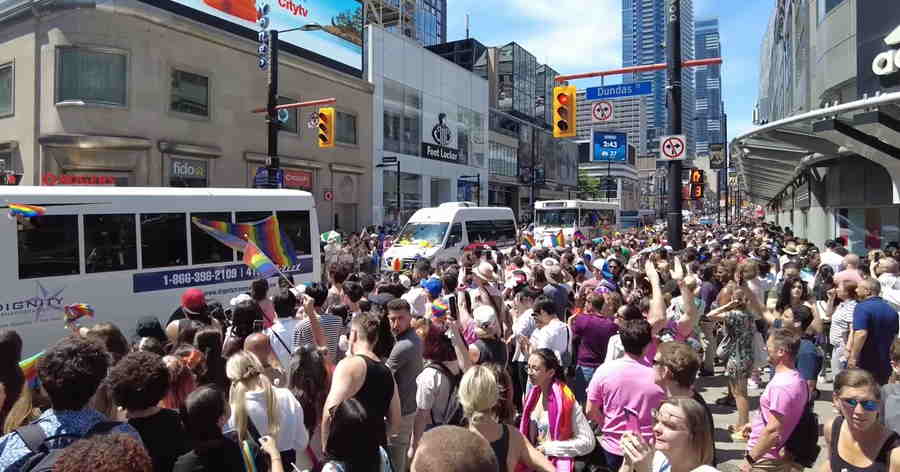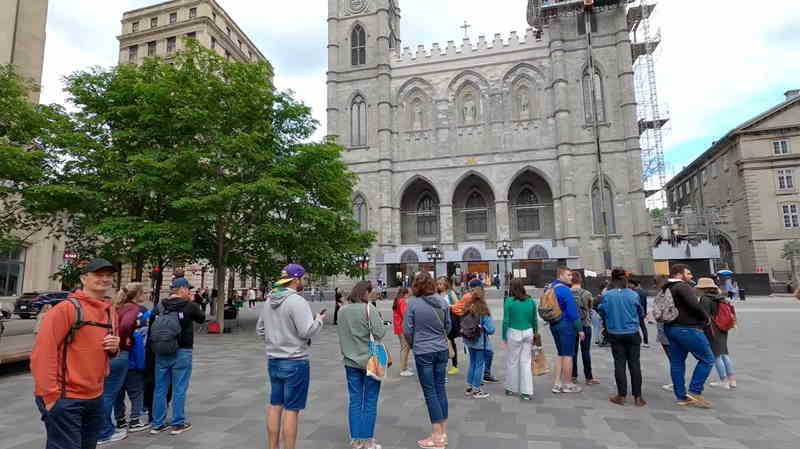

Toronto is the most populous city in Canada and the capital of the province of Ontario. It is located along Lake Ontario's northwestern shore and is home to a population of more than 2.7 million people, making it the fourth most populous city in North America. Toronto has a diverse population, with over half of the population being foreign-born, making it one of the most multicultural cities in the world. The population of Toronto is growing at a rapid rate, due to immigration and a strong economy.

Montreal is the second-most populous city in Canada. As of 2021, it had a population of 1,762,949. Montreal is the largest city in the province of Quebec and the second largest in Canada. It is located in the southwest of Quebec, on the Island of Montreal. The city is the second largest French-speaking city in the world, behind Paris. Montreal is a diverse city with a population made up of people from many different cultural backgrounds. The largest group is French-speaking, followed by English-speaking. Other languages spoken in the city include Arabic, Spanish, Chinese, and Italian. The city is home to many immigrants from around the world. The city has a rich and vibrant cultural scene, with a variety of festivals, performances, and events throughout the year. The city is home to a number of museums, galleries, and cultural institutions, as well as numerous parks and green spaces. Montreal has experienced rapid population growth in recent years. The city's population has grown by an average of one per cent per year since 2001. The influx of immigrants and an increasing birth rate are among the factors driving the city's population growth.
Vancouver is one of the most populous cities in Canada, with an estimated population of 662,248 as of 2021. The Greater Vancouver Regional District’s population was estimated to be over 2.6 million, making it the third-largest metropolitan area in Canada. Vancouver has a diverse population, with immigrants from all over the world. Nearly half of the population is of Asian descent, with the largest ethnic groups being Chinese, South Asian, Filipino, and Korean. While the majority of Vancouver’s population is concentrated in the city’s core, the surrounding metropolitan area is also densely populated. The Greater Vancouver Regional District’s population was estimated to be over 2.5 million, making it the third-largest metropolitan area in Canada.
Calgary is the largest city in Alberta. As of 2021, its estimated population was 1,306,784. Calgary's population is diverse. The majority of residents are of British or European heritage, with the largest cultural groups being English, Scottish, Irish, German, French, Dutch and Ukrainian. The city also has a large Indigenous population, with First Nations, Métis and Inuit communities making up approximately 4.5% of the city's population. Calgary is a young city, with an average age of 36.5 years. This is largely due to the large number of immigrants and young professionals moving to the city, as well as the high birth rate. Calgary is also home to a large number of international students, with more than 25,000 students from more than 120 countries.
Edmonton is the capital of Alberta and is located in the central region of the province. It is the second most populous city in Alberta and the fifth most populous city in Canada, with an estimated population of 1,010,899 in 2021. The metropolitan population of Edmonton is 1,418,118. It is a major economic, cultural, and educational center in the province, and its population is growing rapidly. The city has a diverse population and has seen an influx of immigrants from all over the world, making it one of the most multicultural cities in Canada. The largest visible minority groups in Edmonton are South Asian, Chinese, Filipino, and Black populations. The city also has a large Indigenous population, and the largest group of Indigenous people in Canada is found in Edmonton.
Ottawa-Gatineau is the 6th largest metropolitan area in Canada, with a population of 1.3 million people. The City of Ottawa is the nation’s capital, and is the home to numerous government and corporate offices, as well as the University of Ottawa, Carleton University, Algonquin College, and La Cite Collegiale. The city is also well known for its diverse and vibrant cultural scenes, hosting numerous festivals and events throughout the year. Gatineau is located just across the Ottawa River from Ottawa, in the province of Quebec. It is the fourth largest city in the province, and the second largest in terms of population. Gatineau is home to several major universities, such as the University of Quebec at Gatineau, and several large parks and recreation areas. The city is also well known for its vibrant nightlife and music scene, with several popular venues and events. Ottawa-Gatineau is one of the fastest growing metropolitan areas in Canada, with a population growth rate of 1.5% per year.
Winnipeg is the capital and largest city in Manitoba, Canada. With a population of approximately 758,515 in 2021, Winnipeg is the seventh most populous municipality in Canada. The city is located in the south-central portion of the province and is on the eastern edge of the Canadian Prairies. Winnipeg has experienced rapid population growth in recent decades, with the population growing by 8.04% between 2011 and 2016. The majority of the population is made up of Canadian-born individuals, with the remainder being immigrants from various countries, including the United States, China, India, the Philippines, and Germany.
Quebec City is the capital of the Canadian province of Quebec, and is located on the St. Lawrence River in the southeastern region of the province. Its population is estimated to be around 733,156, making it the second-largest city in the province after Montreal. Quebec City is one of the oldest cities in North America, having been founded by French explorer Samuel de Champlain in 1608. It has since become a major cultural and economic centre in the region and is home to a number of important institutions such as the Université Laval, the National Assembly of Quebec, and the Musée national des Beaux-arts du Québec. The city is known for its distinct French-Canadian culture, which is reflected in its architecture, cuisine, and language. French is the official language of Quebec and is spoken by nearly all of the population.
Hamilton is a city located in the Golden Horseshoe region of Southern Ontario, Canada. It is the ninth largest city in Canada by population, with a population of 729,560 as of 2021 Canadian. Hamilton is located roughly 70 kilometres southwest of Toronto and is situated on the western tip of Lake Ontario. Hamilton's population has steadily increased over the years, due largely to its strategic location along major transportation routes and its close proximity to Toronto. Following World War II, Hamilton experienced a significant population boom, reaching over 200,000 by the 1950s. Hamilton has a diverse population, with over half of its residents having a foreign background other than Canadian. The largest visible minority group is South Asian, which account for roughly 16% of the population.
Kitchener is a city located in the Canadian province of Ontario. Situated in the heart of the regional municipality of Waterloo, Kitchener is the largest city in the region and the tenth largest city in Canada. As of 2021 census, the city had a population of 522,888. The population of Kitchener is a diverse and multicultural mix of people from all over the world. The majority of the population are of European descent, chiefly German, British, Dutch, Italian, and Polish. Other notable ancestries include African, Caribbean, Latin American, and East Asian. Kitchener has seen a steady population increase over the last few decades. This growth is largely due to the influx of immigrants, who now make up a large portion of the population. In fact, almost one-third of the city's population are immigrants, with the largest number of newcomers arriving from China, India, the Philippines, and Pakistan. Kitchener is also home to a large number of students, as the city is home to two post-secondary institutions, Conestoga College and the University of Waterloo.